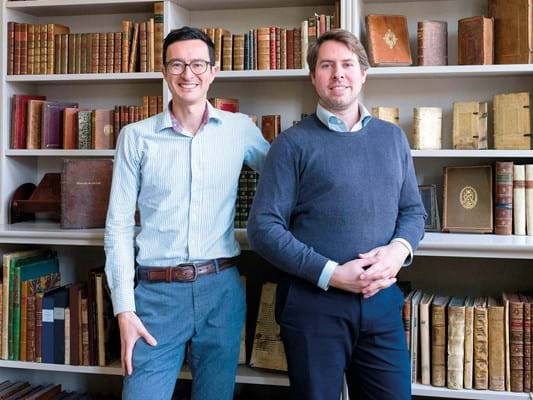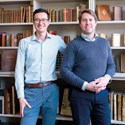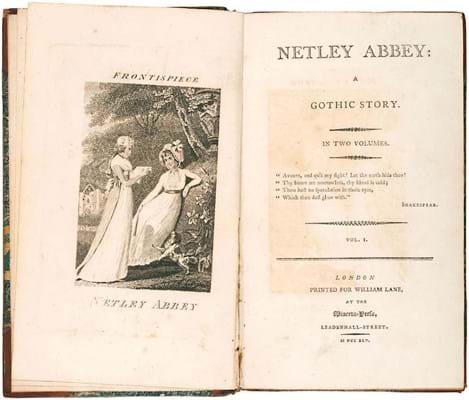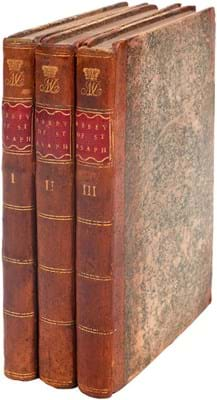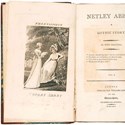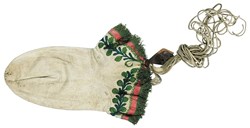ATG: You recently bought and opened a new space in Holborn after years in Mayfair. What prompted the move?
Donovan Rees: The book trade’s centre of gravity has begun to shift away from Mayfair, especially with businesses like Maggs leaving [for Bedford Square after 78 years in Berkeley Square].
Mayfair is drifting towards high-end fashion and it no longer made sense for us to be there. This new property presents us with the opportunity of having a full building which we lacked in Mayfair.
One of the nice features, which makes us probably unique in the book trade, is that we have a room devoted to our company archive, which is one of the strongest in the business.
Andrea Mazzocchi: And from a historical perspective, this is an area where we have history. It’s a place Bernard Quaritch himself would have known.
You moved in the spring but had your official opening earlier this month – what work did you do in the meantime?
DR: The building was previously used as law chambers. The listed core has been preserved but it was a bit tired and needed a bit of work.
AM: The main challenge was having a structural engineer to make sure that every single floor could resist the weight of a few tonnes of books. The lawyers had books but nothing as heavy as we do. In the end, we are not allowed to put shelves in certain places but still have more than enough space.
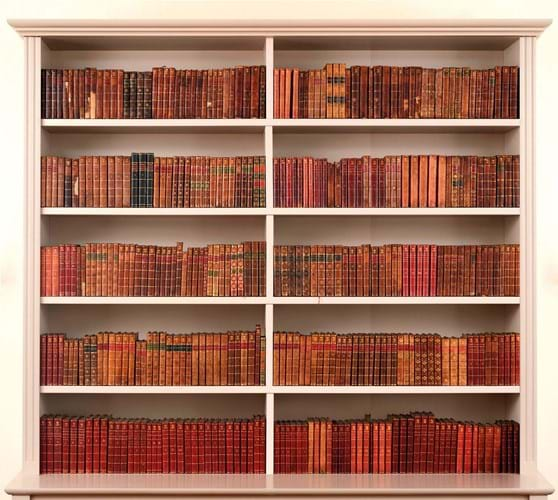
A very recent addition to Quaritch’s stock is this collection of 102 ‘gothic’ novels (and a few other works) from the library of Mary Sandys, later Hill (1764-1836), Marchioness of Downshire and Baroness Sandys. A very wealthy heiress, with estates in Ireland and Berkshire, Mary Sandys played an important political role in Ireland as an opponent of union. Her library at Ombersley Court, a reading library of contemporary fiction also used by her children, had a particularly strong focus on writing by women. Authors represented include Maria Edgeworth, Elizabeth Gunning, Rachel Hunter, Isabella Kelly, Alicia Lefanu, Anna Maria Mackenzie, Elizabeth Meeke, Agnes Musgrave, Eliza Parsons, and Clara Reeve. Offers for the library as a whole are being considered in the region of £150,000.
With such a long company history do you try to stick to historic dealing methods?
DR: Not entirely. The company now is very different from how it was even 20 years ago. There used to be very clear divisions between departments. These days we’re still specialists but we’re also a lot more generalist than we used to be. It’s a better way of working and we communicate more.
AM: For example, an Italian book could come in with an English provenance. That means that we would need to work on that book together.
DR: There are many examples of how much things have changed in our archive. We have correspondence between our founder and his son Bernard Alfred Quaritch on his first trip to America. He was travelling there with some books and a list of stock. He would approach prospective customers with the list and telegraph back to his father using a code to say what had been sold. It would have been legible only to a member of Quaritch staff. These days there is email.
Quaritch is one of the longest-established rare booksellers in London. Why stand at a London fair like ABA Chelsea?
DR: People come to us when they’re in London, but they are more likely to come when they can see 50 booksellers all at once. And there’s a limit to how much you can sell online. No matter how good a photograph is, the physicality of the book is incredibly important.
AM: Also, since so much business happens online these days, it can be the only chance you have to meet a customer in person.
What are some of the best places to learn about book dealing?
AM:The York Antiquarian Book Seminar or the London Rare Books School. Or become a collector – you’ll learn quickly through experience. There is also working here. Quaritch is widely described as the ‘university of bookselling’ because a lot of members of staff have gone on to have very successful dealing careers of their own.
We also have an internship programme which can accommodate up to four or five people a year. Two of our previous interns are now permanent members of staff.
Why is it important to get this training?
AM: In the days before the internet firms like Quaritch or Maggs would have a group ofcustomers who would rely solely on them and would not have any other means of checking the rarity of a book other than what was stated in the catalogue description.
It would be difficult even for other booksellers to get this information. The internet means it’s now possible for anyone to research and buy and sell a book – or at least they think they can.
We’ve come across some weekend booksellers who think they can do the job but it turns out they’ve described a book incorrectly or don’t care about provenance which is a major issue in today’s market.
You also need to be able to check a book is complete, figure out how many copies there are available and tell if it’s been tampered with. There was a 19th century habit of replacing missing leaves with facsimiles which these days are quite difficult to spot. These are all details that at the end of the day makes a book more valuable – or less.
What makes a book particularly sought after in today’s market?
AM: Having a unique feature. Books are by their nature multiples, and these days having an annotation, special provenance or binding can make them more valuable.
DR: Sometimes these copies would have been considered inferior in the past.
There are still people who just want a good copy of a certain book, but these days they’re outweighed by the people who want the copy given by the author to his wife on his deathbed and has written an extra poem in it. These signed copies will continue to hold their place on the market.
It’s most difficult when you have the sort of book that’s been collected as long as the book trade has been going – if you’re looking for first editions of Paradise Lost in an original binding, you’re going to be looking for a very, very long time.
How about in terms of subject matter?
AM: One of the latest crazes is for decorative papers used in bindings.
These days, people are looking at pastedown or endpapers or even the wrappers, particularly if they are in decorative paper.
DR: People are using them to discuss the history of paper production and identifying the individual workshops where they were produced. They can tell, for example, that the wrapper on a French book was made in Germany.
AM: Ten years ago only a small number of people would have thought about that.
This year we’ve had an exhibition about it at the Beinecke Library at Yale [Bibliomania; or Book Madness: A Bibliographical Romance, January-April 2019].
Can you ever predict what’s coming next?
AM: Changes in taste are quite cyclical. Two or three years ago the market was down for natural sciences. Now it is buoyant.
Eighteenth century Venetian imprints are not very fashionable now but give it two or three years and they will come back in fashion because they are simply beautiful.
But many collections holding that material right now are full. You need them to be dismembered or donated and then new collectors will come in.


